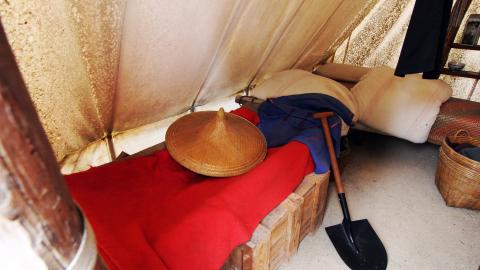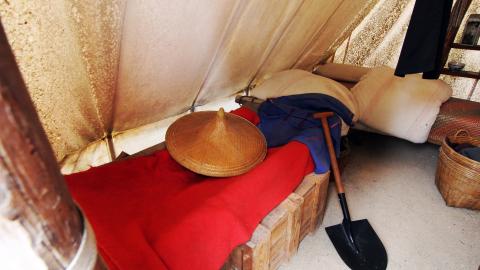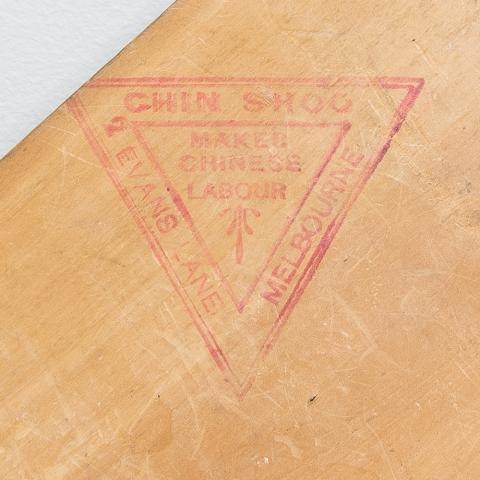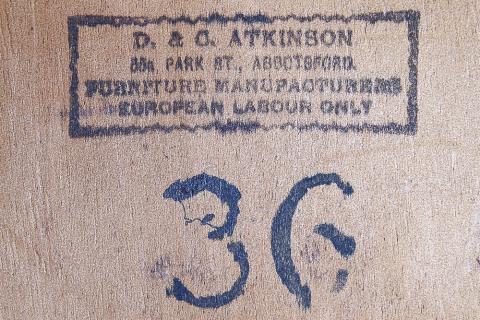Gold dust to sawdust to furniture that can talk!
Who doesn’t love a good old boom to bust story? We Melbournians have a few under our belt but I find the boom of the mid to late 1800’s to be particularly fascinating.
The wide streets that form the grid of the CBD are lined with stunning buildings – the wealth and prosperity of the time is reflected wonderfully by the magnificent architecture of nineteenth and twentieth century Melbourne. To stroll around the central business district, admiring the superb architecture of so many beautiful buildings, is a truly wonderful thing.
Many may not know that Melbourne has a rich, and at times, turbulent furniture making history. Starting from the booming Chinese and European furniture factories of the 1880’s, to the suburban manufacturers of the early to mid-twentieth century and then, of course, through to the mid-century designers and furniture makers of the 1950’s, 60’s and 70’s.
Furniture made in Australia during those periods were often stamped by the maker – oh, how we love to see a makers’ stamp! Stamps were most commonly used but later metal and Bakelite plates were also popular.

Makers’ stamps give these wonderful, mostly hand-crafted, pieces of furniture a voice. Knowing who made it and where not only allows us to date a piece more accurately, but for sentimental people like myself, a little stamp momentarily takes me to another place in time.
I love imagining what the person looked like, what they wore, the tools they used and the layout of their workshops and factories – at times I can almost smell the beautiful scent of newly sawn timber.
Even though those talented craftsmen are long gone, furniture stamps can tell their story for them. People like me (and hopefully you from now on!) who take the time to research the names and places on these precious stamps, are in effect, giving a voice to an otherwise hidden past - see furniture can talk! Ok, a little bit of a stretch but I'm hoping you will get my gist :)

As new custodians of these fine pieces, we form the next chapter in their long life, so if we can speak on their behalf as we pass them on, we are actually keeping the memory of their makers alive.
Sadly, many are not stamped which is such a pity! Like a lost dog without a name tag, the origin of these pieces will remain a mystery. On the crazier side of normal that I am, I often wish that these unmarked pieces could talk – I have no doubt they would have some fabulous stories to tell!
On the flip side, they give an insight into the issues of the day, reflecting a side of Melbourne’s early furniture making history that was far from harmonious.
How so you may ask? To answer this, it is best to go back to the beginning - back to the glory days of Melbourne’s boom of the 1800’s.
Melbourne was the happening city of the late 1800’s – what a place to be at that time! With the gold rush of the 1850’s came extraordinary wealth to ordinary people – optimism for the future was at an all-time high.
Like all good things, the gold rush of the 1850’s came to an end. Miners turned their sights to new horizons, resulting in an exodus of people from the regional gold fields to the big smoke.

With their pockets full of gold, they headed to Melbourne with dreams of new lives and great fortunes swimming tantalisingly before their eyes.
Melbourne didn’t just go bang – it went BOOM! With the population doubling within a decade or two – the meteoric rise in status of the city on the world stage put a proud spring in the step of Melbournians as they set about making their fortunes with gusto.
Sprouting like daisies on a hot summer’s day, buildings sprung up – ornate and lavish, with no expense spared. Businesses boomed, government spending on infrastructure flowed freely, industry and commerce flourished. The hustle and bustle of this changing city must have been a sight to behold.
Financiers and speculators bought up land faster than the Government could release it. With such growth came consumerism – and boy, did people consume! People bought land, suburbs appeared, extravagant homes were built, and so the good times rolled.
Government spending on trams and railways connected consumers to the CBD where arcades, variety stores and emporiums blossomed. Furniture making precincts in the inner suburbs sprung up everywhere but the jewel in Melbourne's furniture manufacturing crown was at the east end of the CBD. Exhibition, Lonsdale & Little Lonsdale Streets became the furniture makers hub – perfectly located to meet the demands of Melbourne retailers who were enjoying a robust trade.
For many Chinese and European miners such a boom presented a golden opportunity for them to try their hand at a different trade. Demand for furniture, fuelled by population and building growth, made furniture manufacturing a popular choice, therefore the sector was predominantly made up of Chinese, European and Australian-European employers and workers.
Numerous small factories popped up – many with as little as two workers but the majority with less than ten. For some time, they all worked happily side by side, but as the Chinese workers skills improved and they became more efficient with their processes, so did the speed of output and quality of their designs and craftsmanship.
Under threat of losing market share, European furniture makers accused the Chinese of running sweat shops. They argued that they could not compete with the low wages paid and the poor working conditions of the Chinese furniture factories, as well as accusing them of producing poor quality furniture. Throw the underlying anti-Chinese and non-European sentiment into the mix and it paints a pretty clear picture of the issues and how they would have quickly escalated.
No doubt, there would have been Chinese and non-European sweat shop style factories, however there were many talented and skilled employers and workers who ran their businesses fairly; achieving high standards, not only in providing good working conditions for their workers but in producing quality product. Unfortunately, as happens all too often, all were painted with the same brush, so to speak.
Far from being perfect themselves, I can only imagine some of the working conditions in the so called Australian, Australian-European and European factories of the time. I have no doubt that conditions would have been pretty tough; low pay, long hours – can you imagine what it would have been like to be a lacky in those factories!
Anyway, they were divisive times – some things never change!
To counter this problem and to meet union demands, a Stamping legislation was introduced in 1896 along with legislation regulating working hours and conditions. As a result, it became law that all furniture produced required stamps stating that the product was manufactured using either ‘Chinese Labour’, ‘European Labour Only’ or ‘European & Other Labour’.

Even though working conditions and pay were touted as the reason for this legislation, the fact that Chinese labourers got no support and representation from the unions when requested, possibly reflects such legislation was also driven by the anti-Chinese sentiment at the time.
Chinese and non-European operated factories struggled as a result of this legislation; the widely accepted reason for this was that they became less viable. However I wonder if the mandatory stamping of furniture enabled consumers with anti-Chinese views, to consciously select furniture made by Australian & Australian-Europeans over Chinese made furniture. If this was the case, I suppose such choices would have impacted sales for Chinese run factories.

Coupled with the stamping legislation and the market crashing spectacularly in 1891, resulting in Victoria’s worst depression, many Chinese furniture makers went bankrupt, and by the 1930’s, they were all but gone.
So, there we have it – like me, I hope you will never again look at a furniture stamp in passing – when you see European Labour Only or Chinese Labour Only … take a moment to picture the kafuffle over market share that ensued in times past in this wonderful city called Melbourne.
Comments
Welcome!
We are so pleased you found us! Thanks for your comment … yes, the history of furniture stamps, particularly in Melbourne is fascinating. At least you won't look at another stamp in the same way from now on! Did you notice the 'Alert Me'' option on our site? If you select it and pop in your email address, you will receive an email every time we post a new item, that way you won't miss out again … don't worry, you won't be bombarded as we only post few items every week :). Thanks again Georgia, regards Sue
Interesting read
Kind regards,
Sue
the Chinese Furniture Makers of Little Lonsdale street
Chinese furniture makers
Even more wonderful that you are creating a little book for each with their history - so wise and thoughtful of you and this will go a long way to ensure they are looked after well into the future, long after we are gone - well done!
Many thanks for your message and apologies again for such a delayed reply!
Kind regards,
Sue
Crown labour only
Crown labour
Many apologies again!
Regards,
Sue
E.M.Vary ?
When I Googled it the info about the legislation came up Very interesting. Unfortunately I could not find anything on the manufacturer them selves.
EM Vary
Apologies for the delayed reply and thank you so much for your message,
Sue

Interesting read
I’ve newly discovered your website. I’m intrigued by the pieces you’ve found (pity for me that others have bought them!)
I’d seen the origin of labour stamps over the years and had assumed it was simply about marketing.
I didn’t realise such stamping was a legislated requirement connected to the furnishing trades union movement.
Thanks for the lesson!